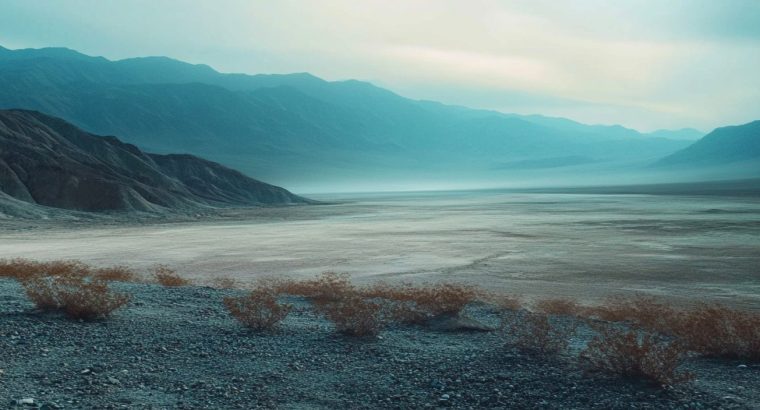Death Valley National Park – 데스 밸리 국립공원
Death Valley National Park – 데스 밸리 국립공원
Death Valley National Park, known as 데스 밸리 국립공원 in Korean, is a remarkable natural wonder located in Eastern California and Western Nevada. This expansive park, characterized by its extreme temperatures, diverse landscapes, and rich history, draws adventurers and nature lovers from around the world. Whether you’re planning a visit or just curious, this comprehensive guide will explore everything that makes Death Valley National Park an extraordinary destination.
Historical Background
Death Valley has a rich and storied past, shaped by both natural forces and human history. Before becoming a national park, it was home to several Native American tribes, most notably the Timbisha Shoshone. European settlers arrived in the late 19th century during the California Gold Rush era, seeking fortune and resources.
The Native Inhabitants
Being the original inhabitants, the Timbisha Shoshone people have a compelling connection to this land. They adapted to the harsh environment using ingenious survival methods and continue to reside in the region to this day.
The Gold Rush Impact
During the Gold Rush, miners flocked to Death Valley in search of riches, leaving behind ghost towns and mining remnants. Places like Panamint City and Rhyolite tell stories of boom and bust, forever etched in the national park’s history.
Geography and Climate
Death Valley National Park is renowned for its extreme climate and geographical features. As the name suggests, it’s one of the hottest places on earth, with summer temperatures often exceeding 120 degrees Fahrenheit (49 degrees Celsius).
Geographical Features
1. Badwater Basin: The lowest point in North America, sitting at 282 feet (86 meters) below sea level.
2. Telescope Peak: The highest peak in the park, offering breathtaking views from its summit.
3. Mesquite Flat Sand Dunes: Popular for photography and sandboarding, these ever-shifting dunes are iconic images of the park.
Extreme Climate
The climate of Death Valley is one of stark contrasts. Winters are relatively mild, making it the optimal time to visit, while summers are scorching. The park receives less than 2 inches of rain annually, classifying it as a true desert environment.
Flora and Fauna
Despite its harsh conditions, Death Valley supports an array of plant and animal life perfectly adapted to survive.
Plant Life
1. Creosote Bush: This resilient plant thrives in the parched desert conditions.
2. Joshua Trees: Although more common in Joshua Tree National Park, they can also be found here.
3. Cacti and Wildflowers: In spring, rare rainfalls can lead to stunning wildflower blooms, transforming the valley into a colorful paradise.
Animal Life
1. Desert Bighorn Sheep: Agile climbers found in the mountainous regions.
2. Coyote: Frequently seen, they are adept scavengers within the park.
3. Endemic Pupfish: Known for living in isolated water bodies, a testament to adaptability.
Things to Do
Death Valley National Park offers plenty of activities for outdoor enthusiasts.
Sightseeing and Photography
The unique landscapes provide endless opportunities for sightseeing and capturing breathtaking images. Artists Palette, Zabriskie Point, and Dante’s View are just a few of the spectacular viewpoints.
Hiking
Death Valley features numerous trails for all skill levels:
- Golden Canyon: A moderate hike showcasing narrow canyons and colorful rock walls.
- Badwater Basin Salt Flats: An easy walk across vast salt flats, best visited at dawn or dusk.
- Dante’s View Hike: Provides panoramic vistas of the valley.
Stargazing
The park is a designated Dark Sky Park, meaning it’s one of the best places for stargazing due to minimal light pollution.
Ghost Towns and Historical Sites
Explorers can delve into the park’s past by visiting ghost towns and historical mining sites.
Camping and Accommodation
Death Valley offers various options for overnight experiences, suiting different preferences and comfort levels.
Campsites
Public campgrounds range from primitive backcountry sites to developed campground facilities like Furnace Creek and Mesquite Spring.
Lodging
For those preferring the comfort of a roof over traditional camping, the Furnace Creek Inn and Ranch Resort offer a range of accommodations.
Safety Tips for Visitors
Given the extreme environment, safety is paramount when visiting Death Valley National Park.
Heat Precautions
- Hydration: Drink plenty of water, even if you’re not feeling thirsty.
- Clothing: Wear light-colored, loose-fitting clothing and a wide-brimmed hat.
- Timing: Avoid strenuous activities during the peak heat of the day (usually from 10 AM to 4 PM).
Wildlife Awareness
While encounters with wildlife are rare, it’s important to respect all animals and maintain a safe distance.
Vehicle Precautions
- Ensure your vehicle is in good working order, especially the cooling system.
- Keep an emergency kit with extra food, water, and an external battery or solar charger for electronics.
Conclusion
Death Valley National Park, or 데스 밸리 국립공원, is a captivating destination offering a unique blend of natural beauty, rich history, and abundant outdoor activities. Visiting this park requires preparation and respect for its severe climate, but those who venture here are rewarded with unforgettable experiences and stunning landscapes. Whether it’s exploring geological wonders, marveling at star-studded skies, or simply soaking in the serene isolation, Death Valley is a testament to nature’s incredible power and beauty.
With careful planning and a sense of adventure, your visit to Death Valley can become a cherished memory, inviting stories told for years. So pack wisely, respect the environment, and get ready to uncover the wonders of one of America’s most remarkable national parks. Safe travels!

